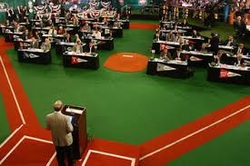 We are now within a few days of the 2013 MLB draft and are having to finalize details on where players stand that 7 Sports Group represents in the draft. Final meetings with prospective draftees are being set to make sure the player and the agent are on the same page. The most important parts of the draft is the final numbers in which the player will sign if they get drafted. The other side of this is making sure the scouts and teams know which players 7 Sports Group represents are signable or not. MLB teams do not want to take a risk on drafting a player that is determined to go to college. Players that are willing to sign must establish a money figure in which they are asking that is within reason and making sure the teams know this number. I have spent several hours on the phone speaking with prospects and explaining where they stand with teams and discussing their asking price. Prior to me joining the 7 Sports Group team, they had already compiled previous signing bonus’s that were accepted by players who most compare to the player they are representing. This information provides validation of their prospects asking price and also provides how they will approach negotiating with the teams.
Other agents in the 7 Sports Group have worked on obtaining the most up-to-date information for each prospect in order to determine their position in the draft. I have been told that the two days before the start of the MLB draft is when most teams have their draft lists set. From this point it just becomes a waiting game to see how the draft evolves.
 Another teaching point enforced by Ryan was to always be working on building relationships with personnel within the industry. Especially coaches and MLB scouts. You can focus all you want on the players, but having a good report with coaches and MLB scouts will assist in recruiting any player. You have to understand the hierarchy of seniority within MLB organizations in order to fully grasp the important parts. An MLB organization has their main front office personnel who have gained the trust of the President and Vice President of the team. From here, you have a level under the front office that are in the office and on the road half the time. Below this level, you have the professional scouts and amateur scouts who are under the Scouting Director for the team. Then you have the national scouting director who supervises the regional scouts who then supervise the area scouts.
Some teams have more “middle-men” then others, which can make things a little more difficult. For the most part, this is how the chain of command works for these organizations and provides how many people information must travel through to get to the top. Building relationships with scouts is a two-way street. If you can help them sign players they recommend to be drafted, they can help with which players they are looking to draft. Odds are if they are going to draft a player, there are a few more teams that are also looking to draft that player. This can help with finding players that may not be on your list of prospects. Area scouts are the ones who you will see most as they are looking at the same players you are. This makes it easy to get to know them and to begin building a relationship with them. One drawback from having a relationship with an area scout is that fact that they looking to show their worth to their organization by signing the best players for the least amount of money. So, beware of what scouts may tell you and sometimes you have to let information from them go in one ear and out the other. Having a good relationship with a scout is definitely a good thing. They will be able to give you information on a player that the player will not normally be able to get. This is where the agent has the advantage and can use for leverage when recruiting a player.
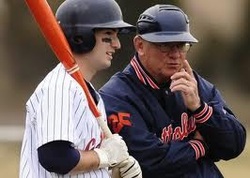 The good thing for me was that every player I watched play showed good potential for being able to mature their talent and make the necessary adjustments to succeed at the professional level. My tasks for watching these games were to evaluate the prospects on the list and to speak with them after the game. I spoke about cold calling being a difficult task in an earlier post, but meeting a player for the first without any introduction after a game beats cold calling any day. Another good thing was that one game was a high school game and the other three were college games. High school games are more difficult to talk with players after a game since most of the time at least one parent is present more often. So instead of meeting with only the player, I have to be able to sell myself to the player and the parent within the first five minutes in order to gain any chance of setting up a meeting. The goal for any agent is to get a face-to-face meeting as often as possible. This will help with keeping your name or agency in their heads more than the others. Meeting with college players is a little easier since they are a little more experienced with the process and understand what an agents purpose is. Plus, they have more time after games than high school players do which gives me more time to get to know them.
 “Hey, how was your day at work?”
“Great…I went to two baseball games!”
Who would have thought that attending a baseball game could be considered work outside the foul lines of a baseball field. I was “asked” to attend four games this week to evaluate prospects that were playing in each of the games. Tough job you say? I would say this has to be the easiest job of all. What better than to have a job where you watch baseball games. This was one good side to being an agent, the rest is a little more difficult, or at least what I have heard. Another easy part was to make notes and watch the prospects play to evaluate if their talent level matched what was written in their scouting reports. I had to watch the players play and determine whether or not they have the potential to compete at a professional level. This is where the difficult aspect comes in. Determine if a high school baseball player can compete at a level where there are full-grown men playing? Simply answer…no! But, you have to look at the “potential” of that players talent. This was a reality check for me. I wasn’t evaluating these player’s against other high school player’s, or even college players. I had to evaluate these player’s at the Major League level. The player can be a high school stand-out, but if you see signs that they may not be able to compete professionally, then you do not contact that player. You have to look at these high school player’s in terms of an investment worth making for several years before you even see a slight return. Would you invest your hard earned money in a player that could possible compete at the professional level? This is where the tough decisions come into play. I was chosen for this mentorship to help the agency determine which players I felt had the potential of making it the big leagues. For example, a high profile high school centerfielder can show great on paper with their statistics, but if they play in a poor league or look like they cannot hit Clayton Kershaw slider then odds are they won’t make it. It is not my choice whether the player can make it, the game of baseball will determine that.
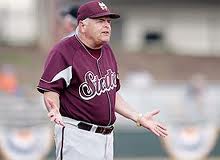 I will say that there is a very diverse group of parents of these players that could possibly go in the MLB Amateur draft. For example, one call may be a pleasant call with a father of a prospect who actually played professionally. Another call may be with a mother who never played sports, single, and has no clue what their son may be entering into once they get drafted. The father who has professional experience can be an easy conversation since they know that nothing is guaranteed in professional sports and just want to make sure their son receives the best contract possible. This father understands the process and is not looking for a handout or is expecting you to take their son for every penny they have. The mother who has no experience with this process and is very difficult and can a few different ways. One way that would be the best for me is a mother that is humble and wants to make sure I am solid with my word to help her son through this process and further. The other way, which can be difficult, is the mother that thinks their son is going to be a millionaire and only asks how I am going to get their son more money than is they were to win the lottery. I learned the hard way on how to handle these conversations and stay on the path of getting a meeting with their son. If you want more experiences with this topic, feel free to email me because and I will be happy to share with you.
My first day of phone calls, I was able to confirm a meeting with a player and his mom in Los Angeles, CA. This player just came onto the prospect scene and there were not a lot of other agencies contacting him yet. I notified Ryan of the meeting and we were set to meet with these people later in the week. One of the most important aspects of having a successful phone call with a prospect is to sound like I have been doing this job for years and that the reason we were calling them was because there was justification that they were going to get drafted high and be offered a substantial amount of money. Questions about if scouts have contacted me about them or was something said about them on where they were projected to go in the draft were very common. I will follow up on this meeting and few others after they have concluded. So stay tuned to hear more.
 So far, I have understood that determining which players are prospects and getting into contact with them is very important. Furthermore, getting to these prospects as early as possible in their careers is also very important. An interesting statistic that I learned from Ryan Smith (CEO of 7 Sports Group) is that there are more agents than baseball players in the Major Leagues. This only takes the players that are on an MLB roster into consideration and not minor league players. This means that it is a very competitive industry and that you are not the only one that is trying to contact prospects. For those wondering what a prospect is, a prospect is a player that is thought to be a player that will have the best chance of bringing in revenue to an agency. This is said to be a return on investment since most players require costs to maintain as a client from the first three to five years of their professional career. Agencies are investing in these players at the beginning of their career in hopes that they will generate a return on this investment when they sign an MLB contract.
I was joining 7 Sports Group during the time in which they were making every last effort at signing prospects for the 2013 MLB Amateur draft. One of my first jobs at 7 Sports Group was to assist Ryan in calling and setting up meetings with players on his prospects list. I spent several hours calling and talking to players and their parents about explaining who 7 Sports Group is and that we were interested in meeting with them. You think cold calling is a rough job to have, try cold calling high school seniors to meet who are on the verge of having their life-long dream come true. You will either get a very interested response from the players, or a “I am tired of you people calling” response. Some players simply did not take my call, and some were very interested in talking to you. The hardest part of this process was…(take a moment to take a few guesses)…talking with parents of these prospects. I have experienced, from what I thought, every possible type of baseball fan, or parent of a future MLB Hall-of-Fame son, during my career. But, I was wrong. I could not believe some of the things I heard from these phone calls with parents who had no clue about the process of the MLB Amateur draft but would grill you on how much my costs would be. I found it very interesting when I explained to these parents that agents do not get paid a fee for their services outside of the player signing a professional contract. We are not a service in which you must pay up front for. An agent can get paid from a signing bonus in the MLB Amateur draft, an MLB contract, endorsements, or player contracts for other professional contracts.
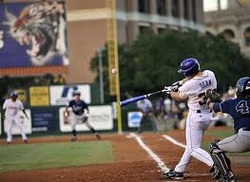 In my opinion, collegiate baseball players are spoiled these days. There are so many ways for them to get exposure in front of the right scouts these days as compared to how it was over fifteen years ago when I played. College players now have a “resume” type history that follows them that also helps in telling their journey thus far in their career. Most collegiate players have multiple scouting reports listed on their Perfect Game profile that has been updated as much as possible to demonstrate their progression in their career. Perfect Game also has a specialized part of their website strictly dedicated to colleges and college players. Perfect Game can now follow these players once they are in college and continue to evaluate their talent level. Resources that are used to evaluate college players consist of the college program in which they are a part of and the summer league that they play in. There are several summer collegiate wood bat leagues that boast some of the top talent in college. The Cape Cod wood bat league has always been a coveted league for the top collegiate talent. Players in this league are invited to play and can expect to be confronted by several agencies and MLB scouts during the summer. The following statement will provide some insight into how many players are drafted that come from the Cape Cod League. “An analysis Cape League alumni shows 253 CCBL Alumni In the Majors 2012. One in seven current MLB players played in the Cape League. In the June 2012 First-Year Player Draft, 229 CCBL alumni were drafted, with 20 CCBL alumni players chosen in the first and supplementary rounds.” ( www.capecodbaseball.org) Needless to say, in baseball this is an amazing statistic. No other collegiate summer league can say this. College players can make or break their baseball career by playing in the Cape Cod League. There are other summer collegiate leagues that are slowly making a name for themselves like the Northwoods Wood Bat Collegiate League, and West Coast Collegiate Wood Bat League. Over five years ago, baseball personnel felt that there was a loss by not having enough places for college baseball players to play during the summer. They have been able to fill this gap by creating more summer leagues for these players to play and be seen at such as the Alaskan Wood Bat League. Not only can scouts understand the level of talent of a player who plays in a certain league, but they can now travel to see these players throughout the summer and evaluate them. On the Perfect Game website, college players are ranked amongst players across the country, have scouting reports written on them, and they are also ranked on what specific range of draft rounds to expect these players to drafted in. Agencies have become dependable on these draft rankings and how they choose which players to recruit. 7 Sports Group is one of those agencies and we created our list of prospects based on the Perfect Game rankings list.
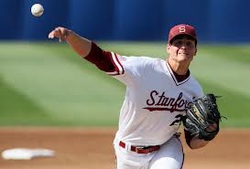 High school rankings are produced by a couple of recruiting websites that also hold “showcases” for these players to attend and gain exposure. The most notable recruiting company is Perfect Game. Perfect Game has become the “showcase giant” for having the top talent in the country attend their showcases. Perfect Game showcases are held several times a year and can be invite only or a paid entrance fee for players to attend. The invite only showcases are typically ones that have gained national attention and require the top talent in the country to be present. These invite only showcases are now sponsored by large companies like Under Armor that attract all scouts from every MLB team and most colleges from across the country. A player can gain exposure and become a top prospect simply by being invited to one of these showcases and performing great in front of the scouts and college coaches. From these showcases, Perfect Game also has their scouts in attendance who write scouting reports on rank the players on their website. An MLB scout or college coach can now go on one website and view scouting reports on any player in the country without leaving their home or office. Perfect Game has gained validation for their player rankings based on the percentage of players who they have ranked high that have been drafted. They have become the most credible source for professional and college scouts to use when deciding which players to pursue. Each high school graduating class has their separate rankings with their contact information listed on their personal profile on the Perfect Game profile.
Since MLB teams are using the Perfect Game rankings as a source for evaluating players, why shouldn’t baseball agents. Baseball agencies now also use Perfect Game’s rankings to create their list of players to try and recruit. The website makes it easy to get contact information and scouting reports on any player in the country in which provides an easy method for agencies to use. Another source that Perfect Game uses to evaluate high school players is their summer travel baseball tournaments in which travel teams who have the top talent attend. This creates another one-stop place for MLB scouts and college coaches to go to see several of the top players in country play.
 Over the next two or three blog postings I will express and illustrate some of the methods in which agencies, scouts, and colleges utilize to rank players who are eligible for the MLB Amateur draft. Players eligible for the MLB draft include high school seniors, Junior College players in their second year, University players who are Juniors or Seniors, or players in college that are 21 years of age. This blog post will discuss how and what colleges and professional scouts use to rank players for the draft.
High School seniors were amongst the most sought out players going into the MLB Amateur draft prior to the new Collective Bargaining Agreement (CBA) taking affect (the CBA will be discussed in more detail at a later time). Prior to the new CBA, high school seniors were able to negotiate professional contracts to the best of their ability or agents ability. Signing bonuses were becoming larger and larger each year and high school seniors were more apt to signing a professional contract rather than attending college. The trickle down affect was that Colleges were seeing a depleted group of baseball players attending colleges. Colleges found themselves struggling to convince players to attend college and honor their scholarship given to them versus going pro. Players opting to sign a professional contract were starting to become more common and so were minor league players being cut by professional teams at a young age. MLB continually tried to find a balance between having the top talent in their farm systems, but to also maintain a high level of competition in colleges and have more baseball players become closer to earning a degree from their University. The new CBA began assigning “slot” bonus amounts in the draft that capped the amount of money teams can offer a drafted player. The new CBA becoming active in 2012 has already changed the way the MLB Amateur draft functions for teams and players. There has been an increase in high school seniors choosing to go to college versus signing a professional contract over the last two drafts. Sorry for digressing, but this post will continue after my week is finished out.
 I have spent over a year in the classroom learning everything possible about the Sports Management world. The first week of a job you would think there will be a lot of sitting and listening about the expectations management has for you. One can expect to be instructed on what management expects of you during your time there along with a list of your duties and responsibilities. Well, this was not the case for me and the first week at 7 Sports Group and my mentorship program. May is a busy month leading up to the Major League Baseball (MLB) June amateur draft for most baseball agencies. This is the last month to recruit players that are thought to be drafted and you are making one last ditch effort to sign them. Meetings, phone calls, emails, Facebook, Twitter, more phone calls, and driving to as many games as possible in order to increase your chances of signing a player in the draft.
I was instructed the first day that I would be traveling a lot to meet with players and watch games to evaluate certain players on a list provided by the agency. The first week would be a “learning on the job” style of teaching. I learned the true meaning of time is money and being in the office during this time of year means you were not working to make money. The main job duty I had was to assist the agency in building their baseball representative portfolio since they were just beginning to venture out into this industry. My professional baseball experience was the main purpose of my mentorship and to utilization my skill to evaluate and relate to other baseball players.
|










 RSS Feed
RSS Feed